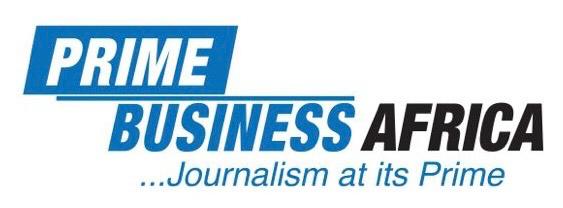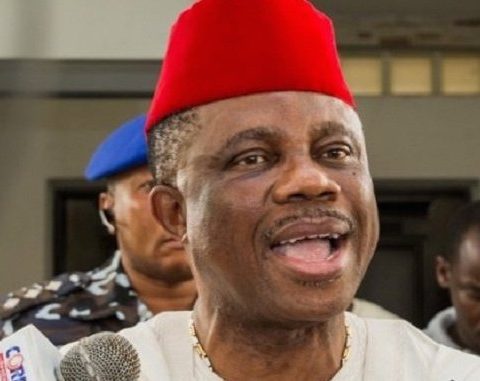Nigerians have expressed frustration as the Warri Refining and Petrochemical Company (WRPC) remains moribund despite the Federal Government spending millions of dollars on its rehabilitation.
Former Group Chief Executive Officer of the Nigeria National Petroleum Company Limited (NNPCL), Mele Kyari, had on 30 December 2024, announced the resumption of operations at the refinery. Prior to that, the 125,000 barrels per day (bpd) capacity refinery, with an annual production capacity of 13,000 metric tonnes of polypropylene and 18,000 metric tonnes of carbon black, had been moribund for decades due to technical issues.
Join our WhatsApp ChannelAt the time of the resumption, the NNPCL management said it was operating at 60 per cent of its installed capacity, producing naphtha, fuel oil, and Automotive Gas Oil (AGO), also known as diesel. However, four months later, a report emerged indicating that the refinery had been shut down again.
According to The Punch, a document produced by the Nigerian Midstream and Downstream Petroleum Regulatory Authority (NMDPRA) revealed that the refinery had been shut down since 25 January 2025 due to a fault in its Crude Distillation Unit.
“The Warri Refining and Petrochemical Company was shut down on 25th Jan. 2025 due to safety concerns over the CDU Main Heater,” the document stated.
It showed that the Federal Government spent $879.6 million on the rehabilitation of the Warri Refinery. This means the refinery was shut down barely a month after it was declared operational.
While some analysts expressed dismay over the turn of events, others said they were not surprised at the outcome.
A leadership consultant and social and political commentator, Chief Emmanuel Okafor, said it is unbelievable that after spending millions of dollars on repairing the refinery, it packed up after one month. “Unbelievable. $897 million pumped into the Warri Refinery, and it shuts down just one month after claiming ‘full operation’? This isn’t failure—it’s fraud dressed in bureaucracy. Someone signed off on this mess. We need names, not excuses. Enough is enough,” Okafor wrote on his X handle on Tuesday.
An economist and energy expert, Mr Kelvin Emmanuel, said that from the reality ground as of the time the NNPCL declared the Warri Refinery operational, it wasn’t feasible that it would operate sustainably and also produce Premium Motor Spirit (PMS), also known as petrol.
According to Mr Emmanuel, the refinery has two major challenges, which include access to crude oil supply for its feedstock and the technical unit that produces petrol that is not functional.
He wondered why the Federal Government spent millions of dollars on the Turn around Maintenance (TAM) of the facility and was celebrated, even by the presidency.
READ ALSO: Nigerians Disagree As NNPCL Reports Warri Refinery Working
“Warri has a 46km pipeline that is supposed to take crude oil feedstock from Escravos through the Chanomi creeks to the plant, but that pipeline is out of service until date, Warri has no catalytic reformer to process naphtha into petrol, so it is beggars’ belief how anyone will expend $897m in TAM, and even the presidency was celebrating it,” Mr Emmanuel stated.
The analyst said he had seen the Engineering Procurement and Construction (EPC) sheet and alleged that the “line items were inflated up to four times the actual cost,” and expressed concerns that no one is answering questions about what he called a “complete travesty that the procurement was.”
In an interview with Arise News TV, Emmanuel said the pipeline that was supposed to take crude oil from Escravos to the Warri refinery was vandalised in 2016 and the NNPCL subsidiary responsible for Multi Product pipelines has not said anything about the state of the trunkline.
The same fate Bedevils Kaduna Refinery
He further stated that the same fate bedevils the Kaduna Refining and Petrochemicals Company (KRPC). According to him, the same trunkline designed to supply the Warri refinery is also what provides the loop for transporting crude to Kaduna Refinery through parts of Edo, Kogi and Niger states.
He observed that the option of transporting crude in barges would cost more than using a pipeline and may not be sustainable due to the impact on the cost of production.
“NNPC says that they are expecting Kaduna to also come on stream. So, the question is, how are they going to take crude oil, for example, when Kaduna comes on stream, as they’ve said or speculated about Kaduna? Are they going to take it through badges?
“If you are going to take through badges, you’re going to be incurring anywhere around three to four times the cost. The cost of transportation through pipeline is about $2 to $3 per barrel. So, if you’re taking crude in badges, you’re looking at anywhere between $9 and $15 per barrel.
“If you’re transporting at that rate, what is what refiners call the cracking spread. Are you going to achieve a positive cracking margin, or how are you going to achieve an alpha and not move from subsidising consumption like we are under recovery of subsidy of petroleum imports, subsidising production, because the refineries that are owned by the government are just not at the level of economies of scale to be able to turn in profits or sustain their operations without subsidy.”
Commenting on the Port Harcourt Refinery, which the NNPCL declared operational in November 2024, Emmanuel said it is practically not producing PMS. According to him, the Port Harcourt Refinery also does not have a catalytic converter to crack naphtha into PMS and is also unable to recover petroleum gases. “Petroleum gases are a compulsory derivative you get when you refine higher distillates like PMS. Warri refinery has a catalytic reforming unit that is not currently in service.”
The NMDPRA document also revealed that the Port Harcourt Refinery, which has an installed capacity of 60,000 bpd, has been operating at just 37.87 per cent since it was re-streamed.
During the recommissioning of the Port Harcourt refinery, NNPCL said it would produce daily outputs of 1.4 million litres of Straight-Run Gasoline blended into PMS, 900,000 litres of Kerosene, 1.5 million litres of Automotive Gas Oil, 2.1 million litres of Low Pour Fuel Oil, and additional volumes of Liquefied Petroleum Gas (LPG).
The Port Harcourt Refinery has an expected full monthly production capacity of 286.20 million litres, however, the January 2025 production data showed that it produced 120.91 million litres of refined products, representing just 42.2 per cent of the full capacity.
The Warri Refinery, according to the document, produced 1.96 million litres of AGO, 2.84 million litres of Household Kerosene (HKK) in December and 10 million litres of AGO and 12 million litres of HKK in January 2025.
READ ALSO: Nigerians To NNPC: Prove That Port Harcourt Refinery Is Working
In August 2021, the Federal Government under the then President Muhammadu Buhari approved $1.48 billion for Port Harcourt Refinery, $897 million for Warri Refinery, and $586 million for Kaduna Refinery, making a total of $2.96 billion for TAM.
According to Emmanuel, this amount spent on TAM, which appears to have become a flop, can build a brand new 60,000 barrels per day refinery.
With the outcome, many experts have argued that handing over the facilities to private management through privatisation could improve efficiency. On his part, a financial analyst, Kalu Aja, said that with all the shenanigans happening in the NNPC and management of the refineries, it is high time the federal government sold off the publicly-owned refineries to private investors for efficiency.
“What is clear is that it’s not functional at capacity, and the $897 million expenditure to get this refinery functional looks like it was washed down the drain. All four refineries should be sold 100% and Nigeria should call it a day,” Aja stated.
Victor Ezeja is a passionate journalist with seven years of experience writing on economy, politics and energy. He holds a Master's degree in Mass Communication.











